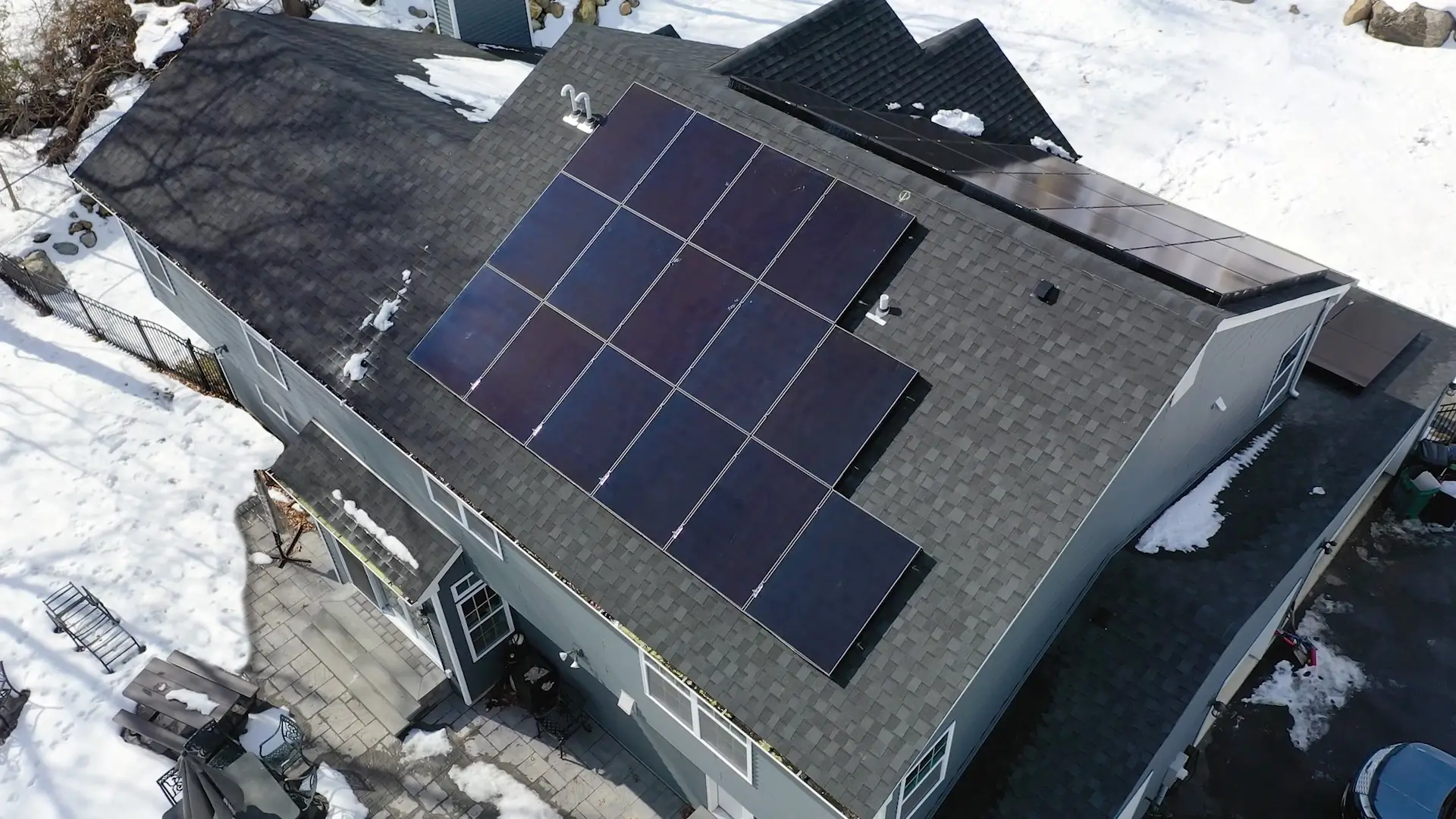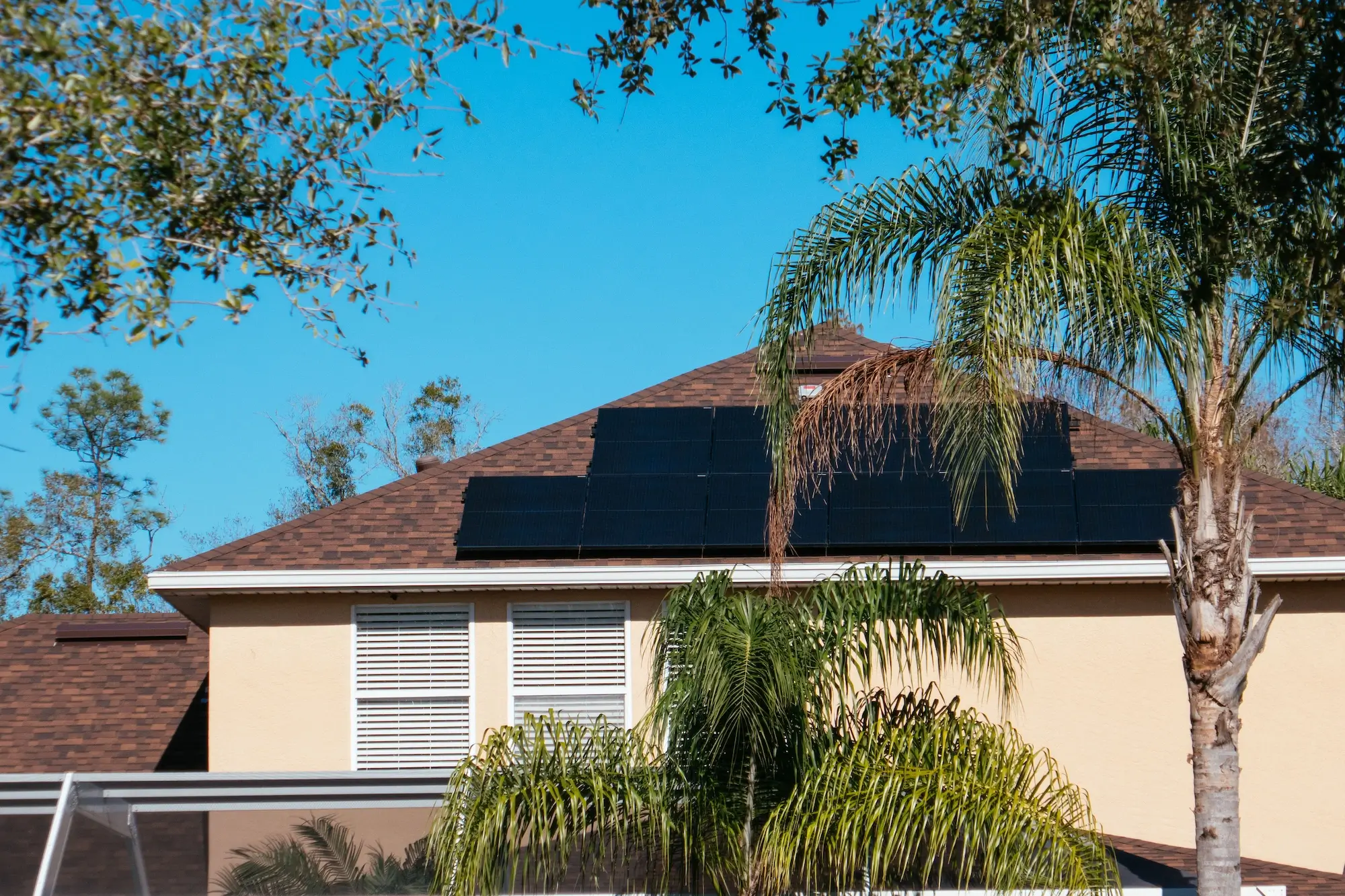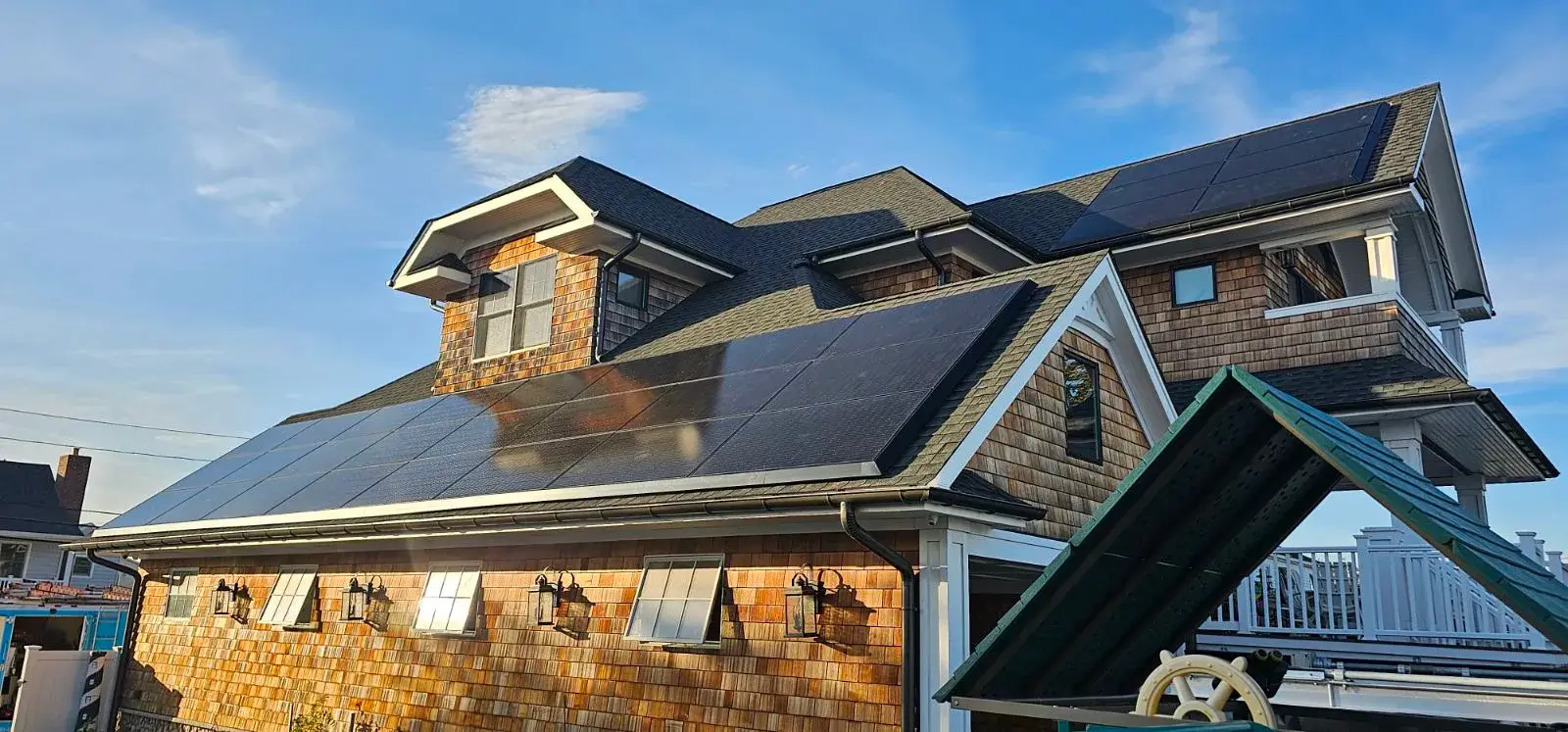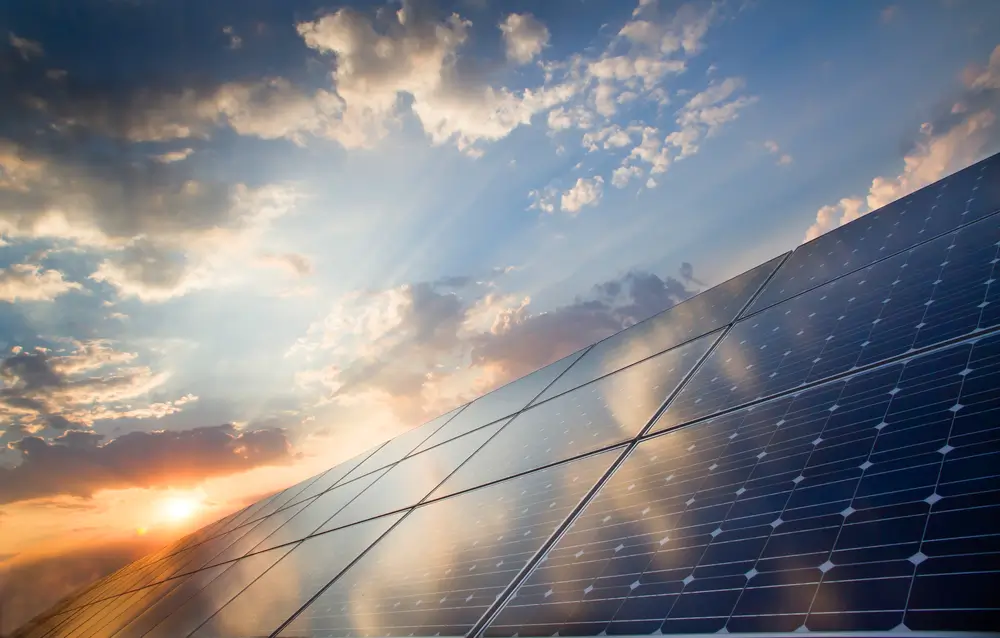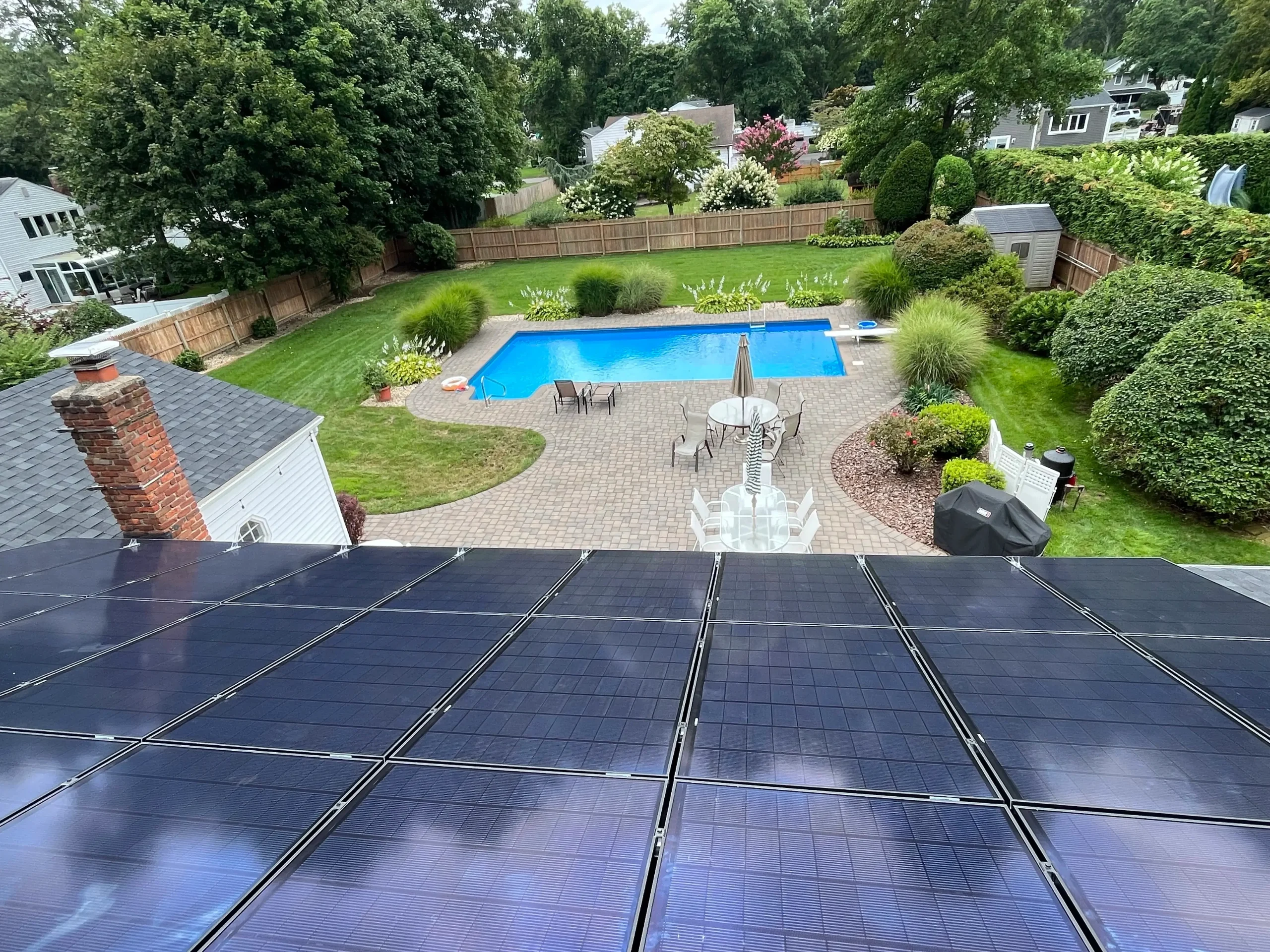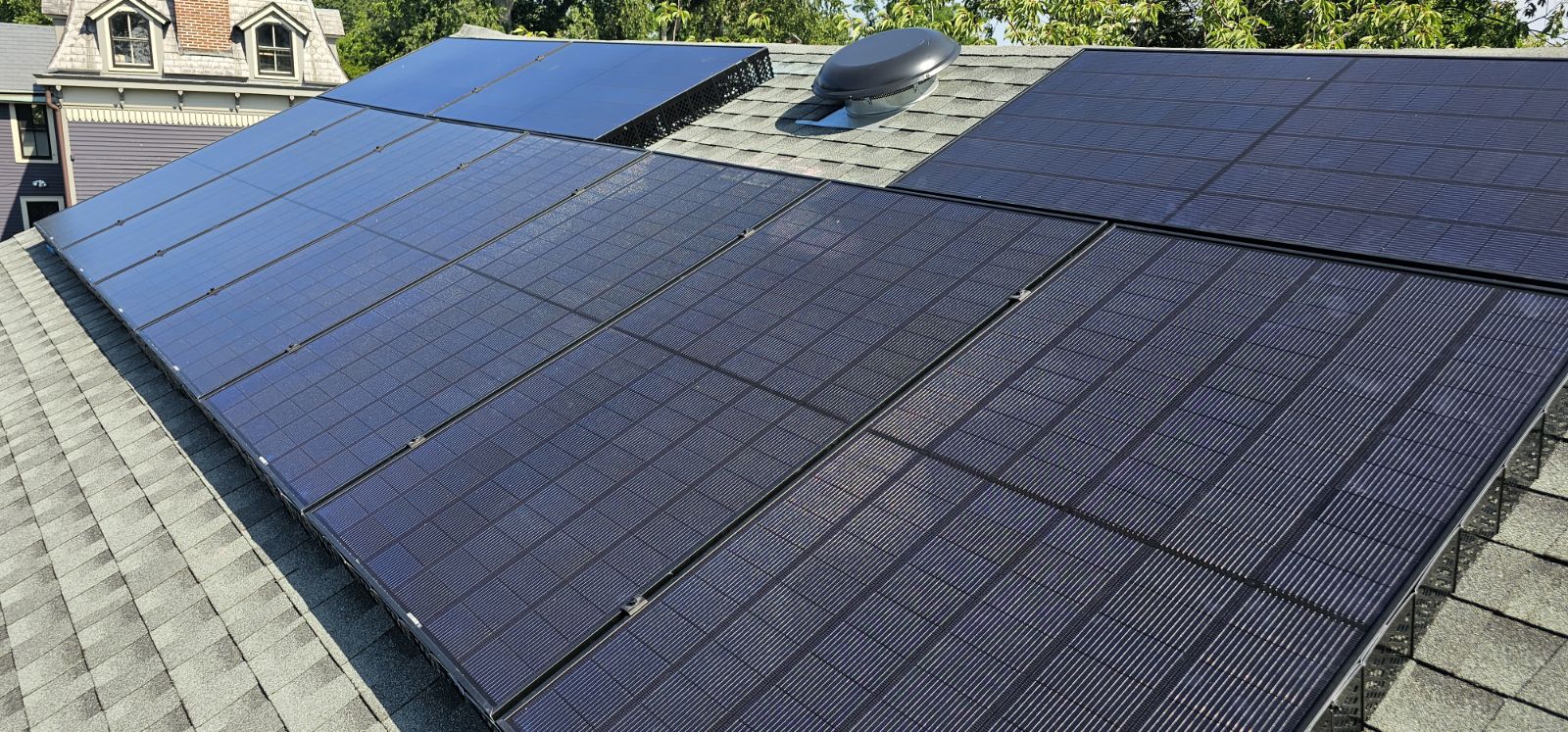
With more homeowners and businesses making the switch to clean, renewable energy, over 3 GW of solar installed in New York State alone, it’s important to understand not only how solar energy is made, but how it can be stored and used when you need it most.
Basics of Solar Energy
Before we get into how solar storage works, let’s quickly go over how solar energy is created. Solar panels made up of photovoltaic cells, or PV cells, take in sunlight, even on overcast days, and convert it into direct current electricity, or DC electricity. Since the electrical equipment we use runs on alternation current electricity, or AC electricity, it passes through an inverter which changes the current from DC to AC electricity so that it can be used by our everyday electronics and appliances.
When your solar energy system generates more power than you use, you can store that extra energy for use later on.
How Solar Energy is Stored
Since the solar panels themselves don’t store solar energy, and neither does the inverter, where does that excess energy go? Homeowners and business owners have the option of getting their solar systems with or without battery backup storage, which will make the difference in where your power is stored.
The Utility Grid
Those who choose their solar arrays without battery backup storage will have their extra energy sent to their local utility grid. This energy is then banked as energy credits and can be applied towards your monthly electric bill. When your home needs energy, like at night when your solar panels aren’t actively generating power or during an emergency, electricity is taken from the grid. It’s important to note that even though you have solar panels, your system is still a part of the power grid. If the grid shuts down, you’ll lose access to that energy.
Battery Backup Storage
For those who choose solar plus storage for their home or business, they can store excess solar energy via battery backup storage, located on their property, and easily accessible. As your solar system creates electricity, your batteries are being charged. Any additional excess energy will then be sent to the utility grid, but the battery takes priority.
Batteries like the Tesla Powerwall come with the Tesla Gateway and free app which allows residents to monitor their battery’s use and charging status. The more power you wish to store, the more batteries you can get. Some homes have 2-4 batteries depending on their energy needs and use.
How to Use Battery Backup Storage
Accessing the energy stored on your backup batteries is easy. With batteries like the Tesla Powerwall, you don’t need to do anything besides monitor your app. When your home or business cannot run on the utility grid, like during a power outage or other emergency, the Tesla Powerwall will automatically turn on, continuing to supply power.
When this happens, an alert will be sent through the free app to tell you the system is running on the batteries. The app will indicate what time the switch occurred and approximately how many hours the batteries will be available until they run out of stored power. To extend the use of your batteries during this time, you may need to monitor or limit your electrical use to those essential electronics and appliances, especially overnight.
When the sun is up, even on overcast or rainy days, your solar panels will again generate electricity and will charge your batteries again for continued use. Should you want more stored solar energy readily available, ask our Service Department about adding more batteries for backup energy.

Benefits of Solar Energy Battery Storage
1. More Green Energy, Less Pollution
By relying on battery backup storage, you can rely less on power from utility grids and reduce your carbon footprint. Energy from power plants create air and water pollution when fossil fuels are burned. By cutting back on our reliance to these energy sources, we can decrease the amount of pollution generated and play an integral part in combatting climate change.
2. Good for Your Wallet
You may already know that by switching to solar energy you can reduce or even eliminate your monthly energy bill. You may also know about current state (up to $5,000) and federal (up to 26%) tax credits to cover the cost of your solar installation. But did you know there are tax credits available for battery backup storage? The amount you save will vary based on kilowatts used so contact a SUNation Service Specialist for information about your specific needs.
3. Backup Emergency Power Supply
Whether it’s hurricanes, tropical storms, Nor’easters, an over-powered grid, or simply a rogue branch that fell and hit a power line, power outages are bound to occur on Long Island and NYC. When that happens, your options are typically to either to sit and wait it out or get a gas-powered generator and hope for the best. With your solar-powered battery backup storage, you can keep the electricity flowing seamlessly, quietly, and without generating more pollution. This safe option will keep the power on when all your neighbors’ homes go dark. Caution: You may end up being the most popular house on your block!
For peace of mind and a more independent solar system, battery backup storage is the key. If you want to store the solar energy your home or business creates to use when you need it most, you’ll need to go solar plus storage. It’s the best way to store your energy and gives you full control over its use with the easy-to-use monitoring app.
To learn how you can get your solar plus storage system, call our team of SUNation Solar Specialists at 631-750-9454 or visit SUNation.com/book-a-consultation. If you already have solar panels and wish to add battery backup storage, contact our Service Department at 631-750-9454 and select option 2 or email Service@SUNation.com. SUNation Solar is a Tesla Powerwall Certified Installer.



